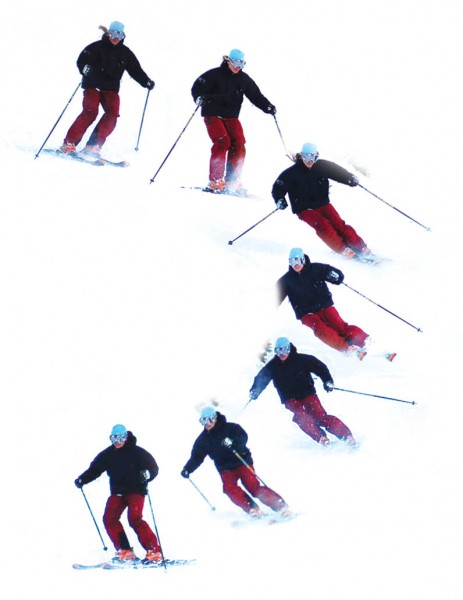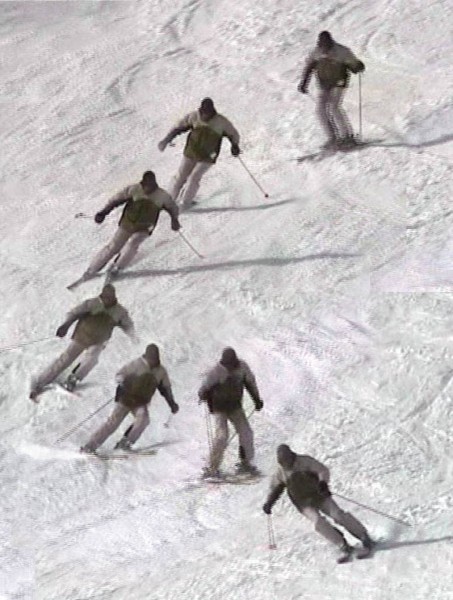Alpine Tip by Karin Harjo
Here is a quick way you can clean up your own skiing and also help to improve the skiing of your student by a very simple focus. Keep your stance width consistent throughout the arc and transition of a series of turns.

Over the years there has been a great deal of discussion over stance widths: narrow, wide, open, closed, etc. The truth is we need to have the ability to use any stance width to accommodate the terrain, speed and turn size/ shape we are skiing. Given these variables sometimes it requires a narrower stance and other times a wider stance. What creates adaptability in our skiing is the ability to pick stance widths to derive a desired outcome. A consistency in stance width throughout the arc of a turn will allow the skier to be more versatile in their skiing.
To keep it simple let’s focus on parallel turns. So what does a consistent stance look like? When the skis, feet and legs stay the same distant apart and for the most part parallel relative to each other throughout the arc. In Figure 1 a consistence stance is displayed in this skier performing medium radius turns.

So what does an inconsistent stance look like? In Figure 2, while staying with the medium radius turn on groomed terrain, you can begin to see stance inconsistencies. In this sequence we see the greatest inconsistency in stance at the apex of the turn. What does it look like? The skis are diverging. What caused this? The upper body rotates away from the outside ski and the skier tips to the inside at the apex of the turn, drawing the weight off the outside ski. As a result the outside ski will track straight and away from the desired turn the skier is attempting to make.
Here are a couple of key things to focus in on when watching for an inconsistent stance:
- If you see an inconsistency in stance width where does it happen within the arc of the turn? At the initiation (edge switch), apex (shaping phase), or transition?
- What does the stance inconsistency look like? Do the skis diverge, converge, get further apart from each other, get closer together?
- Do the edge angles of both skis match each other and are the feet and legs relatively parallel in attitude to each other?
- If there is an inconsistency within the stance width throughout the turn, what is causing that to happen’? Or why does the skier need to make that adjustment in their stance?
When working on your own skiing or that of your student it may be as simple as drawing attention to when, within the arc of the turn, the stance inconsistency occurs. Then telling them to focus on staying consistent at that point to affect a positive change.
In most circumstances this “focus” may not be enough. Identifying these visual cues of stance inconsistencies will give you a good starting point from which to create change. From there spend time working on the ‘cause’ of stance inconsistency you observed and a significant change will be in store for you or your student!
[connections_list id=9 template_name=’div_staff_bio’]